I wouldn’t have been able to describe it better than Alana (a friend and true Kiwi) did on her blog: “Sheep and New Zealand go together like Marmite and cheese, bangers and mash, $10 bottles of wine and a fresher Byo.” What she meant was that if you ever dive into New Zealand’s economic history or find yourself in a conversation with a native, sooner or later it will come down to sheep.
Have you ever shorn a sheep? Me neither, well, until now. Sue from the Centre invited me to accompany her family that shears sheep here and then, and quite regularly in the Spring. They picked me up just after lunch, and Tyler, Sue’s son, was already awaiting me in the backseats of their pick-up. Both of us were pumped to kick some sheep’s butt today. Justin, Sue’s husband, had loaded the truck and trailer with the equipment that was needed for today’s mission. We arrived at the farm in St. Clair (South Dunedin) after a good 20-minute drive. Manon, a friend from the centre who lives just up the road, completed our pack. The sheep had a nice place here, close to the beach, but our wolfpack came to disturb its peacefulness this afternoon.
The Wolfpack Looking for Prey
The flock of sheep home to this hillside belongs to Anna and Sasha, friends of Sue’s family, who greeted us as we came up the driveway. Justin parked the truck beside the house, in front of a small fenced area floored with hay. The flock, however, was divided.
We were welcomed by the bleating of a beautiful ewe (female sheep) called Daagi and her two lambs (Jackie) Chan and (Chris) Tucker living here on the hay. The rest of the gang grazed in deep wheat on the hills behind the house. I assumed that the separation served breeding purposes, as Chan and Tucker indeed looked like movie stars.
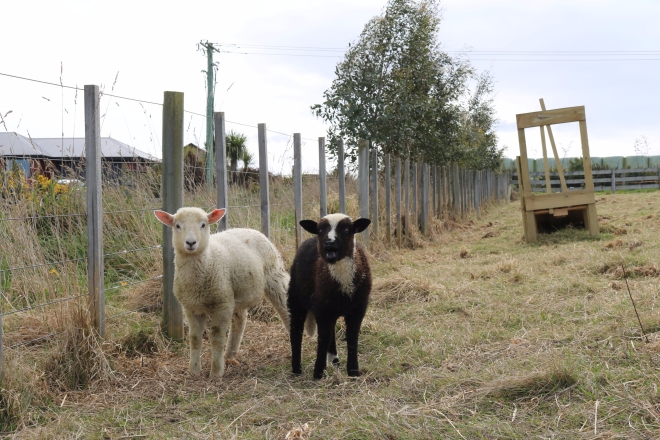
Tyler and I got out of the pick-up and inspected the property thoroughly. Justin unloaded the gear and Sue prepared a little something for an appointment with the two lambs. I don’t know much about sheep but I know that any domesticated animal requires a certain care and so do patients like Chan and Tucker. Tailing, for example, is a common practice in the wool industry.
“Baaahhhh!” – Chris Tucker
A natural tail protects the sheep’s rear end from weather extremes. However, faecal matter may stick to the tail and create damp areas on the wool, which attracts flies like honey attracts bears. Flies prefer to lay their eggs in such areas and/or the skin near open wounds. The resulting maggots eat into lower layers and feed off the sheep’s flesh. As the maggots evolve, more eggs are laid and consequently, more parasites are drawn to the host body. Once enough of them have spread, a stressed sheep loses wool and patches of its fleece turn black. A successful infection ends with the sheep’s death after a maximum of a week, due to ammonia poisoning – “Flystrike” (Myiasis) as shepherds call it.
So as cruel as it sounds, tailing actually benefits sheep like Chan and Tucker. Sue took Tucker in her lab and placed a ring around his tail. The ring will slowly cut off the tail’s blood supply until it finally falls off (she did the same thing with his balls, #sorrybrother). She then vaccinated him, so that the open wound left on the shortened tail would be resistant to any kind of parasite or infection.
The first job of the day was done, so I went over to help Justin who was setting up a path. The path was needed to drive the sheep into a box of barriers where our customers would wait until it was time for their appointment. Justin showed me his toolbox and oiled his clipper aiming for perfect haircuts this afternoon.
It was time to find the flock, so the Wolfpack split up. Justin, Sue and Anna headed down the hill to herd the flock, a procedure that would take some time because these sheep were sneaky little bastards. “Come on, kids! Come on, kids!”
The rest of our pack, Tyler, Manon, Sasha and I, lurked in the pillow-like grass, preparing to ambush the incoming prey. We had to avoid the brightly blooming gorse (Ulex europaeus), a thorny shrub that was introduced by settlers and had spread over the entire country ever since. I counted 13 sheep and got a bit drowsy.
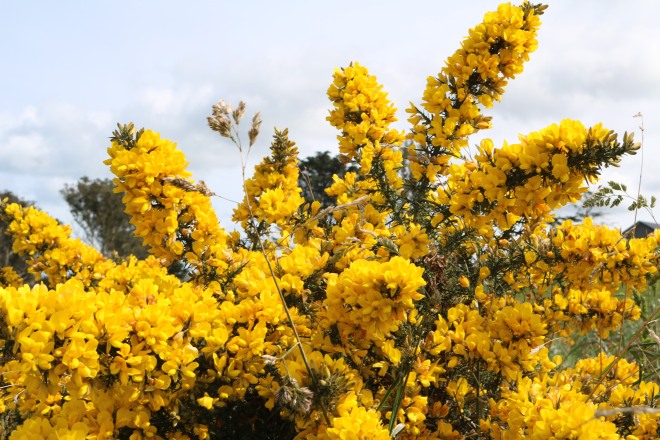
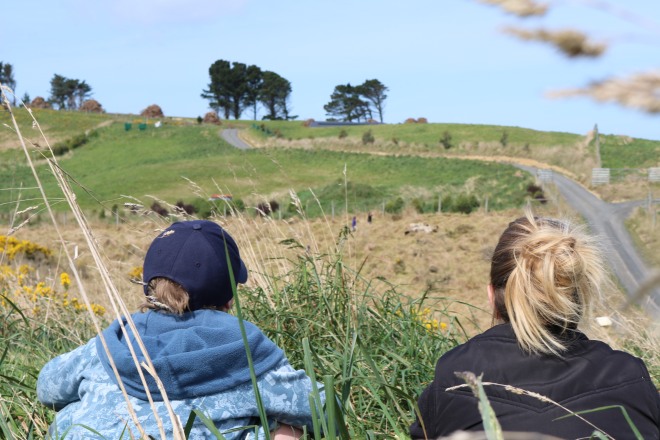
Speaking of bright things, Tyler borrowed my hat during our pursuit because the sun shined strongly. Just those 15 minutes waiting in the grass and I already felt a burn on the exposed parts of my upper body. According to the Lonely Planet, there are three reasons that contributed to the burning feeling on my neck:
1. Less ozone (O3) in the stratosphere. That is debatable due to seasonal and geographical changes (more information on what ozone is, who monitors it and how New Zealand has more melanoma incidents than Australia)
2. The earth’s tilt exposes New Zealand and the southern hemisphere (90° at the Southern Tropic/Tropic of Cancer around 21/22 December) to the sun during the spring and summer months (November-March). A UV Index higher than 10 is said to be harmful – triggering skin cancer. While values in the Middle Sea reach an index of 10, New Zealand (and especially the North Island) may even exceed 14.
3. There is less pollution in the southern sky that could potentially block UV rays.
Meanwhile, the alpha pack had herded the sheep in our direction. Tyler jumped up, we followed and surrounded the flock until it finally got into the box.
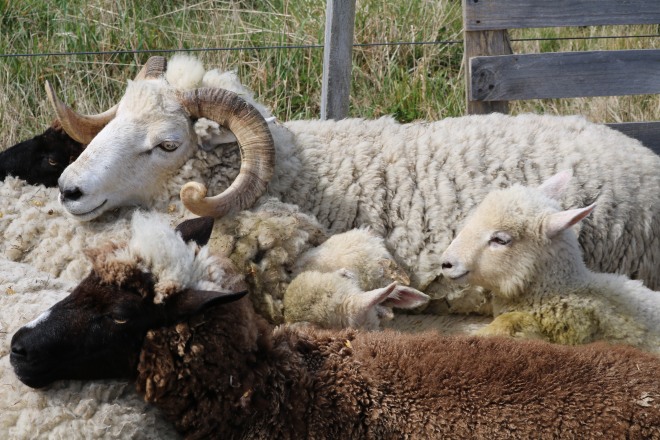
On our way to the box, Tyler stepped into a nasty patch of old gorse that had lost its bright colours. Bravely, he wiped over his wound which the pack later referred to as “battle scar”, and moved on – there was still a job to be done.
Cheap Sheep Industry
Likewise, gorse, the Brits had brought sheep (Romneys first) to the settlement as early as the 1850s. Merino sheep, the Bentley among wool sheep, followed soon after the Romneys and has benefitted the Kiwi wool industry ever since. According to StatsNZ, in 1982, three million people lived alongside 70 million sheep in New Zealand.
This number has dropped massively over the last 35 years. It is estimated that around 30 million animals live in the country today.
Wool exports were and are substantial for New Zealand. The industry had its golden hours when William Soltau Davidson crossed Merino ewes with Lincoln Stud, a sheep primarily bred for its meat. The result was the Corriedale, a sheep both valuable for its wool and meat, and ‘made’ in Otago.
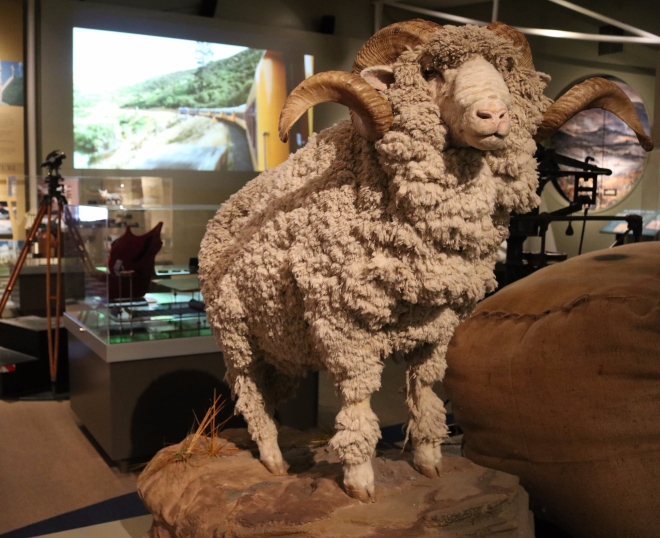
I don’t want to go into too much detail here, but Pacific people were/are apparently fans of canned meat. Back then, canned goods were more or less a stopgap for an almost collapsing wool market. Kiwi shepherds simply herded too many sheep that produced too much wool. More on that via Alana’s blog.
The solution: Frozen meat. It was 1880 when, again, William Davidson convinced the Albion Shipping Company to modify the Dunedin by equipping the ship with a Bell-Coleman freezing plant a.k.a. compression refrigeration. Aiming for London (in 90 or so days), the Dunedin left Port Chalmers on 15 February 1882, which would become the first frozen meat shipment in history – kicking off the oversea (refrigerated) meat trade. Of course, New Zealand dominated the market. And by the way, Kiwi lamb, mutton (an older sheep’s meat) and beef are quite popular in the world and renown for its tender taste.
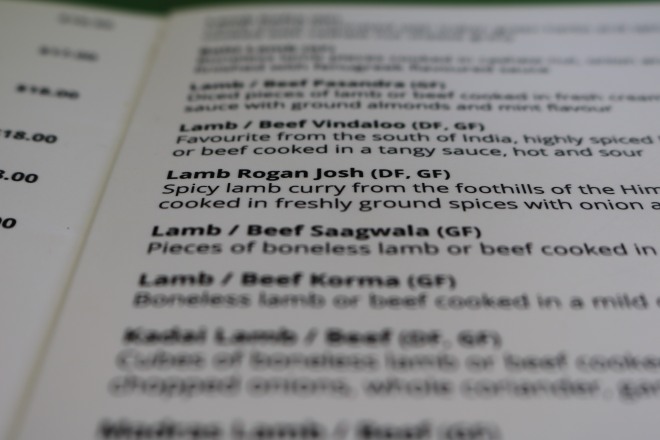
Although the number of animals was more than halved due to the arising dairy industry, lamb exports remain a backbone of New Zealand’s economy. It is not the sheep industry as a whole that is in decline, no, it is the demand for wool. Sheep are now common farm animals almost anywhere in the world – most of them living in China. Sue and Justin told me that the price for white wool decreased to 3 to 4 NZD per kilo and that many shearers now do the job only for the hours paid.
How to Shear like a Boss
With the flock resting in the box, I helped Justin set up the gear: A wooden platform for even ground, two clippers, a battery and engine unit, some cleaning tools, shears, drench and the gun for its injection (drenching is the process where disease-preventing drugs are orally forced into the animal). While Justin put his cowboy hat on, Tyler and Sue marked the sheep’s ears with the stapler. Left: ewes. Right: rams.
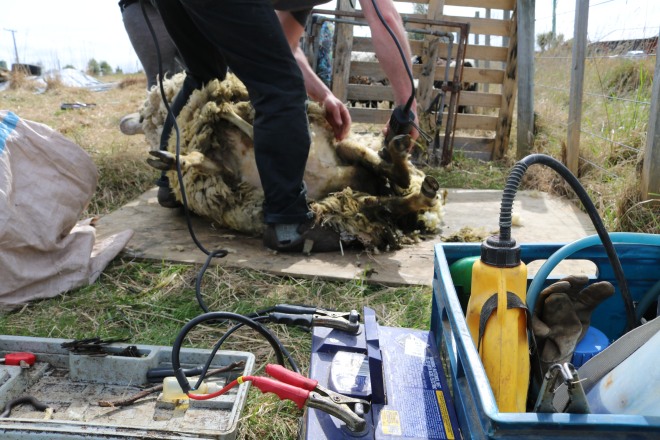
Justin chose his first customer, an older ewe, with a very dirty bottom. I recognised that she, as well as any other sheep in the box, still had a long tail. The former owner clearly couldn’t care less about his/her animals before giving them to Anna. Very irresponsible. So what we actually did here today was more sheep caring than shearing.

“Belly first,” explained Justin, “that is usually not needed. And not a part of the actual fleece.” Lower body next, then the inside of the legs and the tail (if still there). “Keep its head turned and locked between your legs,” Justin went on, “and then sort of start going around its legs, with the shears flat on the skin.” From here, Justin went over the length of the body ending with the head before he flipped her to start from the other side. He made it look very, very easy and almost satisfying to watch.
Before Justin released the ewe back to the flock, he gave her a little mani-pedicure, injected the drench and counted her teeth. Counting them indicates how old a sheep is. While lambs still have their baby teeth, 1- to 2-year-olds (=hogget) have two adult incisors, 2- to 3-year olds four, 3- to 4-year-olds (more than 2 incisors = mutton), such as this ewe was, have six.
Depending on your preference, you can leave the sheep with an afro, give it classic butch cut or, if you feel creative, form a cheeky mohawk (naahh just kidding, although I regret not asking that).
Wrestling the Black Sheep
After I watched Justin shearing five or six of them, I believed I was ready to do it myself. Sue picked an Arapawa ewe, the flock’s “Black Sheep”. Let’s just say, she was a little bit moody compared to the rest of them.
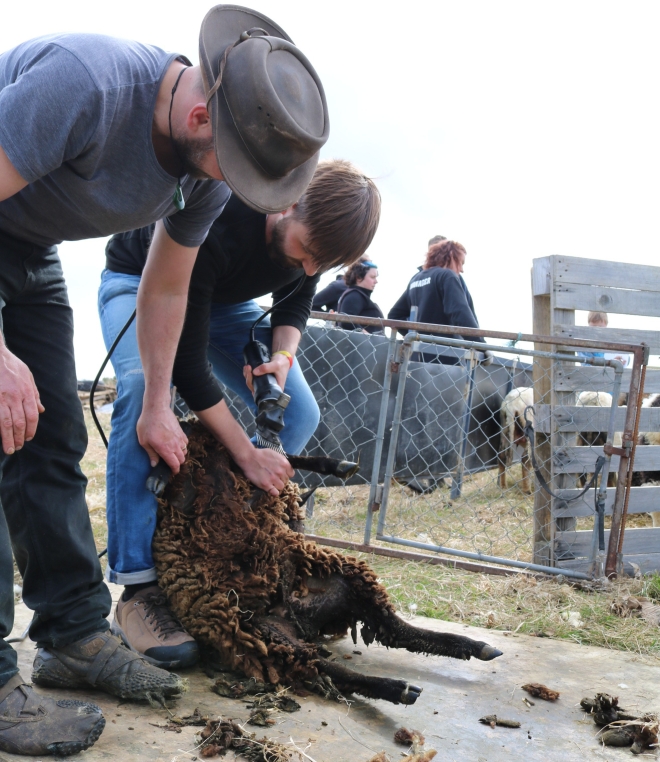
Justin showed me how to pick her up and position the beast on its back, and I placed her head between my knees. It was important to hold her still this entire time because you don’t want to hurt the animal and neither cut yourself with the clipper. She welcomed me to our appointment with a slight but meaningful kick. The shearer wasn’t even on yet and I was already sweating. This was going to be fun.
As watched before, I started with her belly. Like Justin said, the wool here is not important. However, it was hard to tell (as a layperson) where her teats were and I was afraid of hurting the animal. My sensei, Justin, helped me with those tricky bits, such as the legs and tail as well. The rest was my lone responsibility.
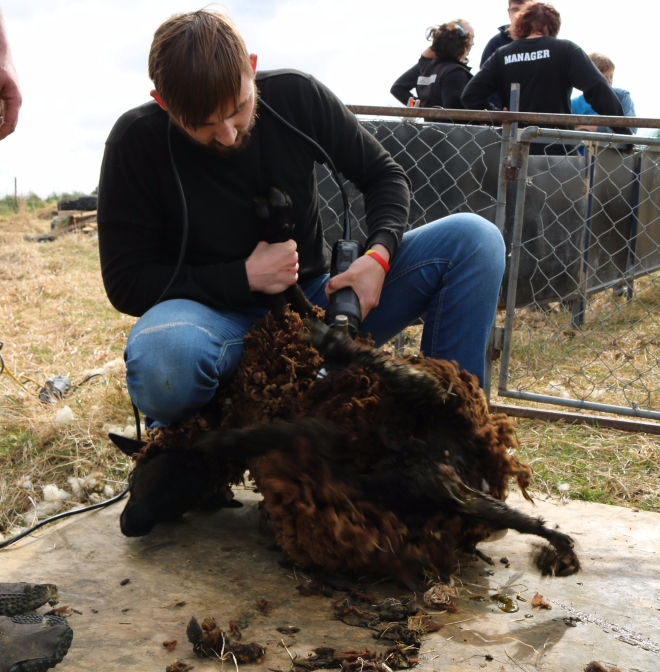
My heart was pumping hard and her’s, too. I cramped up trying to hold her tightly with my right arm and moving the clipper along the body with my left. After a few strikes on Moody, I was slowly (very slowly) getting a hold of it. I just took extreme care.
One side was done, I flipped her to the other side and started from here aiming to cut off the fleece as a whole. I tried to calm her by whispering in her ear and rubbing over her head, which seemed to work as I was able to loosen my grip. Her head, however, was still in my control and the wrestling match seemed to have a winner. Before I gave her over to Justin, I formed her remaining hair into a tiny mohawk.

We then drenched Moody Mohawk because domesticated sheep needed a certain care. I haven’t had such close and intensive encounter with an animal for a long time. To be honest, besides the sheep shit on my pants and shoes, it felt great. And I felt great, and a bit tired, too.
I was in awe of her this entire time – wrestling, calming, and shearing the beast. And after the job was done, I felt like the God of Sheep because of that. Well, only until Justin checked her teeth: “She is a 1-year-old.”
What the Heck Are Sheep Anyway
Sheep are Therian mammals, giving birth to live lambs without the use of a shell. They belong to the order of Artiodactyla (even-toed ungulates/hoof animals) that in contrast to odd-toed hoof animals (Perissodactyla) such as horses, rhinoceros or tapir, balance their weight between the third and fourth toe instead of third toe primarily. Even-toed hoof animals are giraffes, deer, lamas and much more, including Cetaceans (whales and dolphins) since cetaceans have evolved from land mammals such as the hippopotamus. Experts speak of a specific taxonomic classification called Cetartiodactyla.
Sheep are part of the Bovidae family, ruminating animals with cloven hoofs such as goats, cows, buffalo and bison. Medium-sized bovids belong to the subfamily Caprinae (goat-antelope-like creatures) that have a great biodiversity with more than 10 genera. One of them is the genus Ovis – sheep. Domesticated sheep (Ovis aries) have more than 200 breeds and are believed to have been bred from a common ancestor, the wild mouflon.











